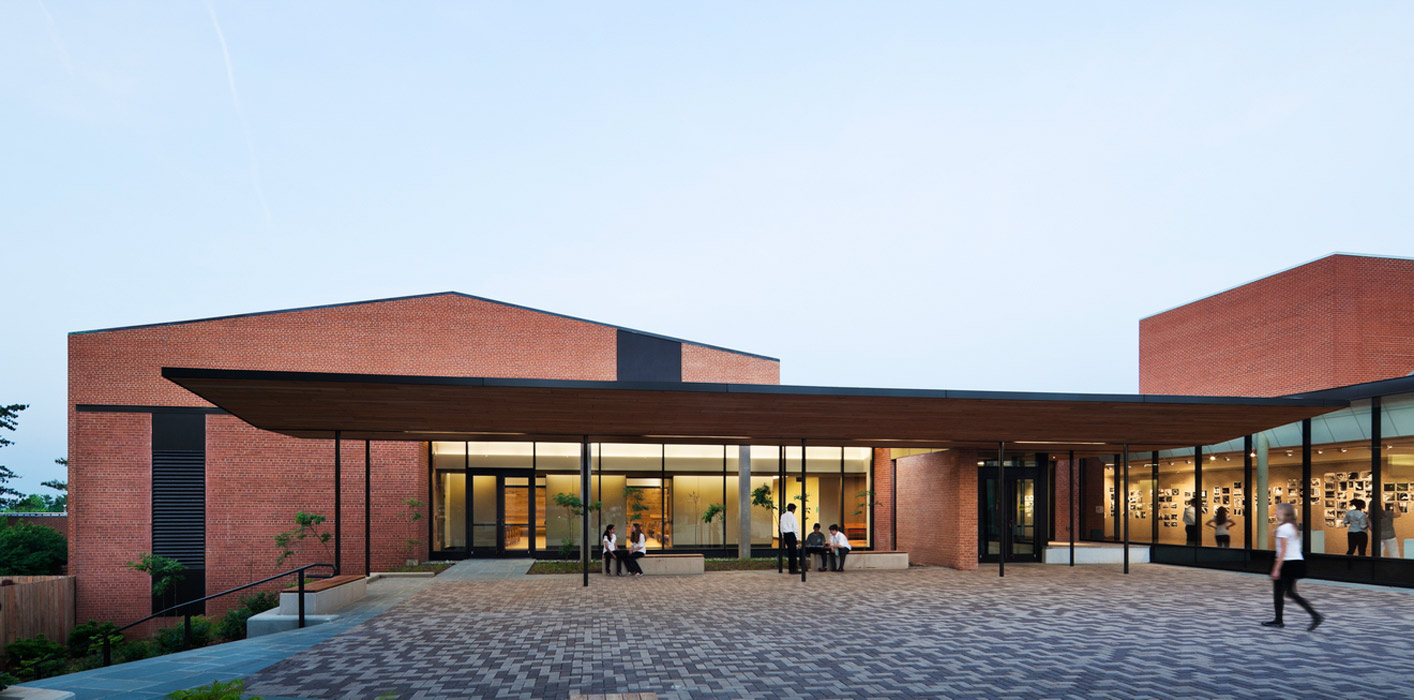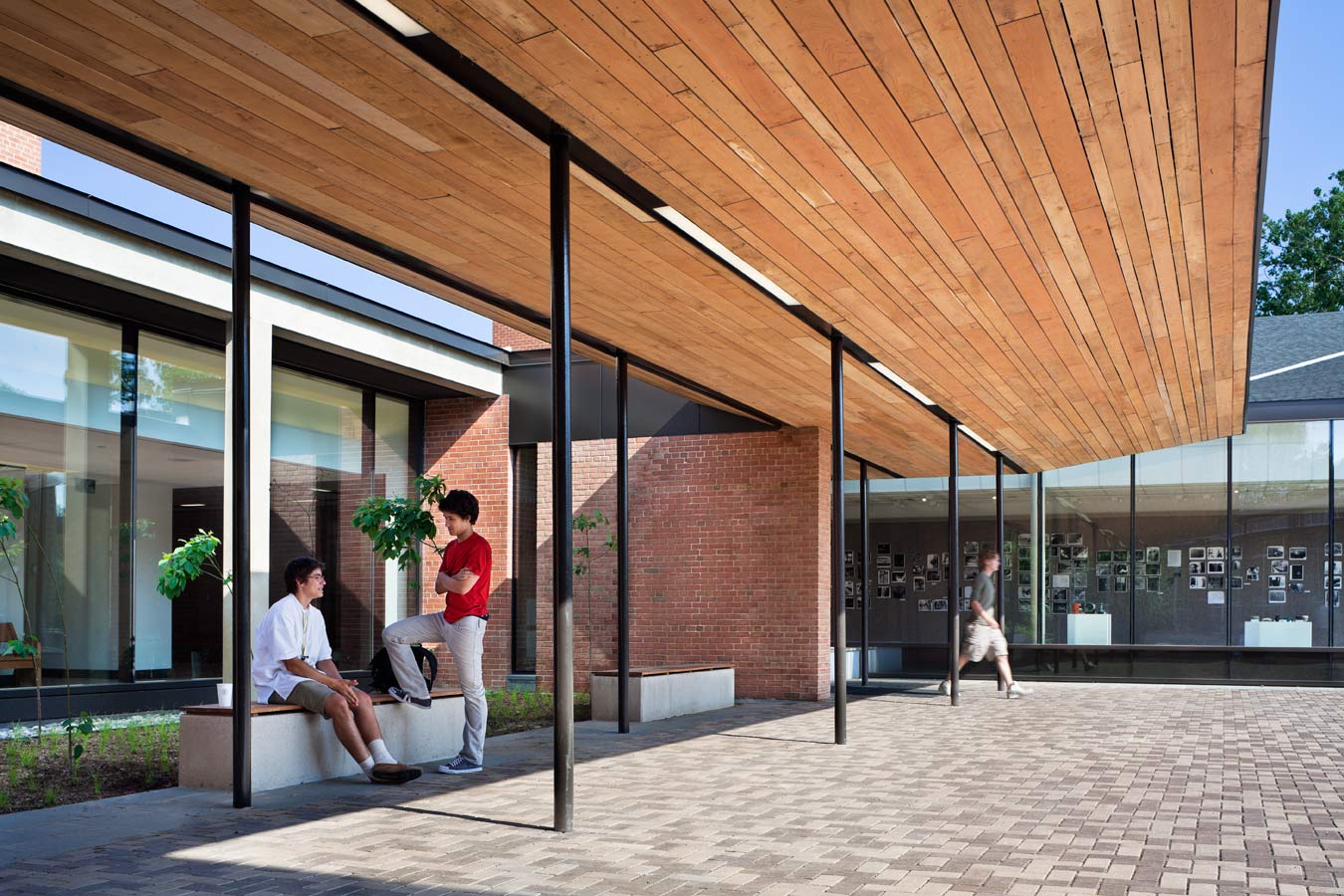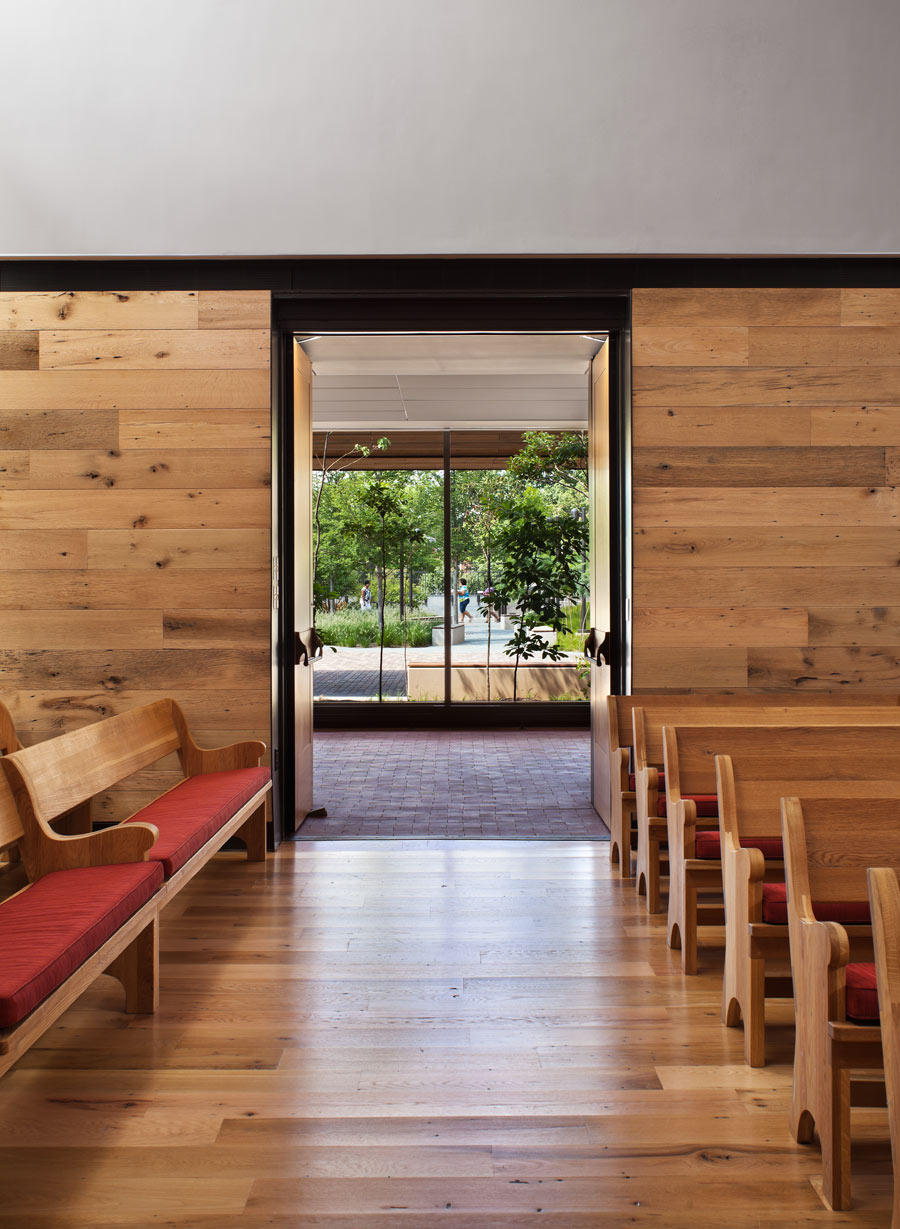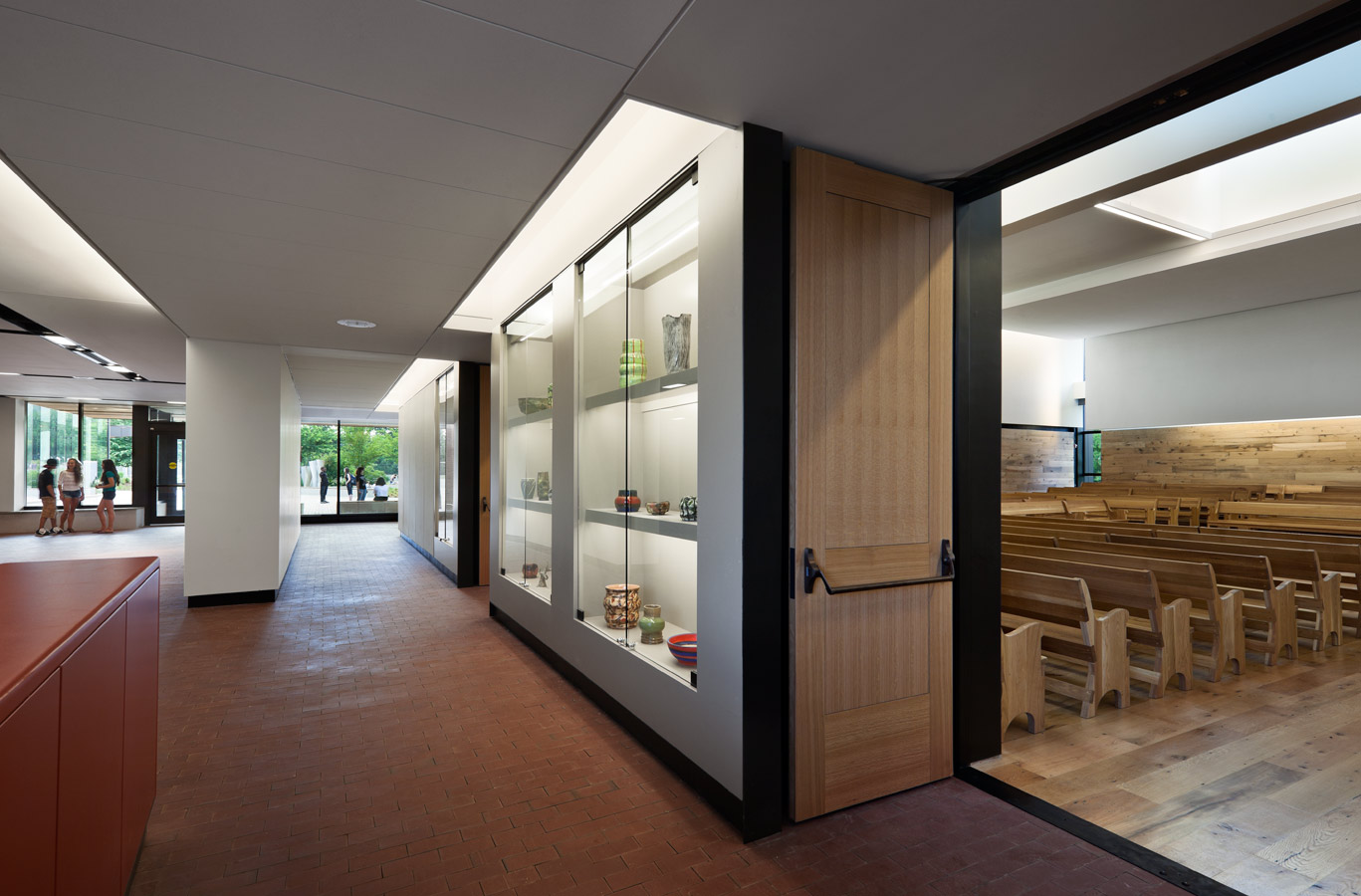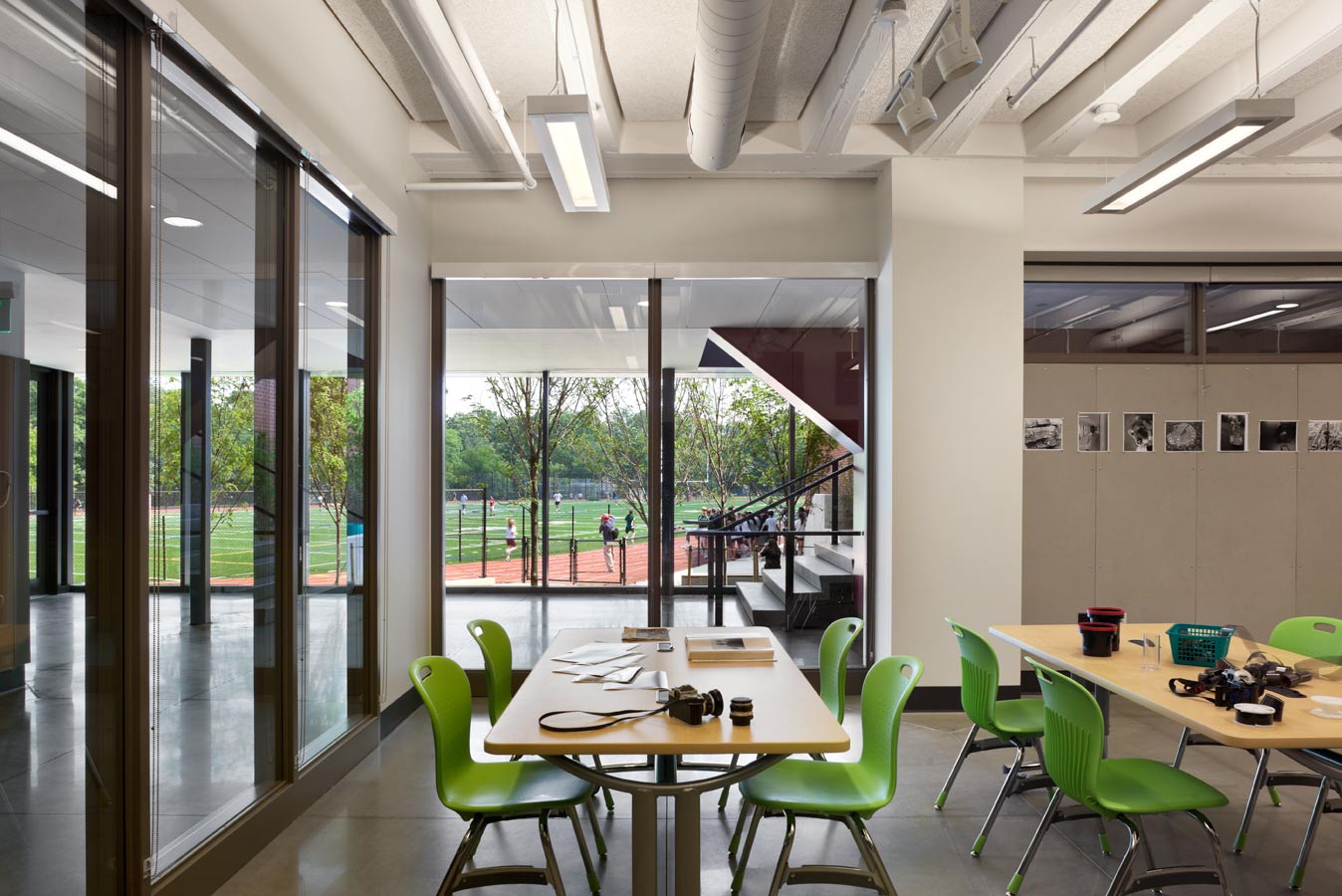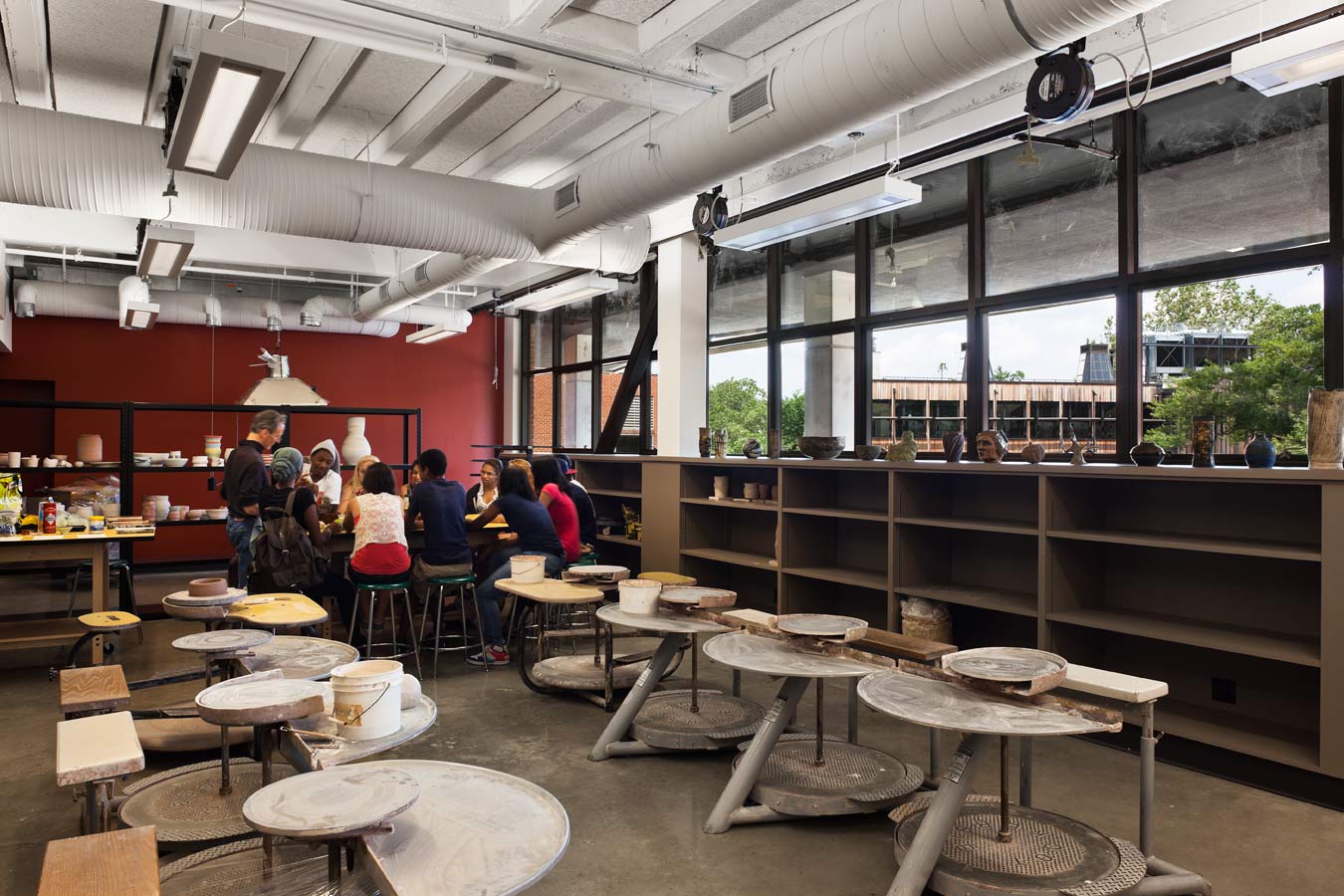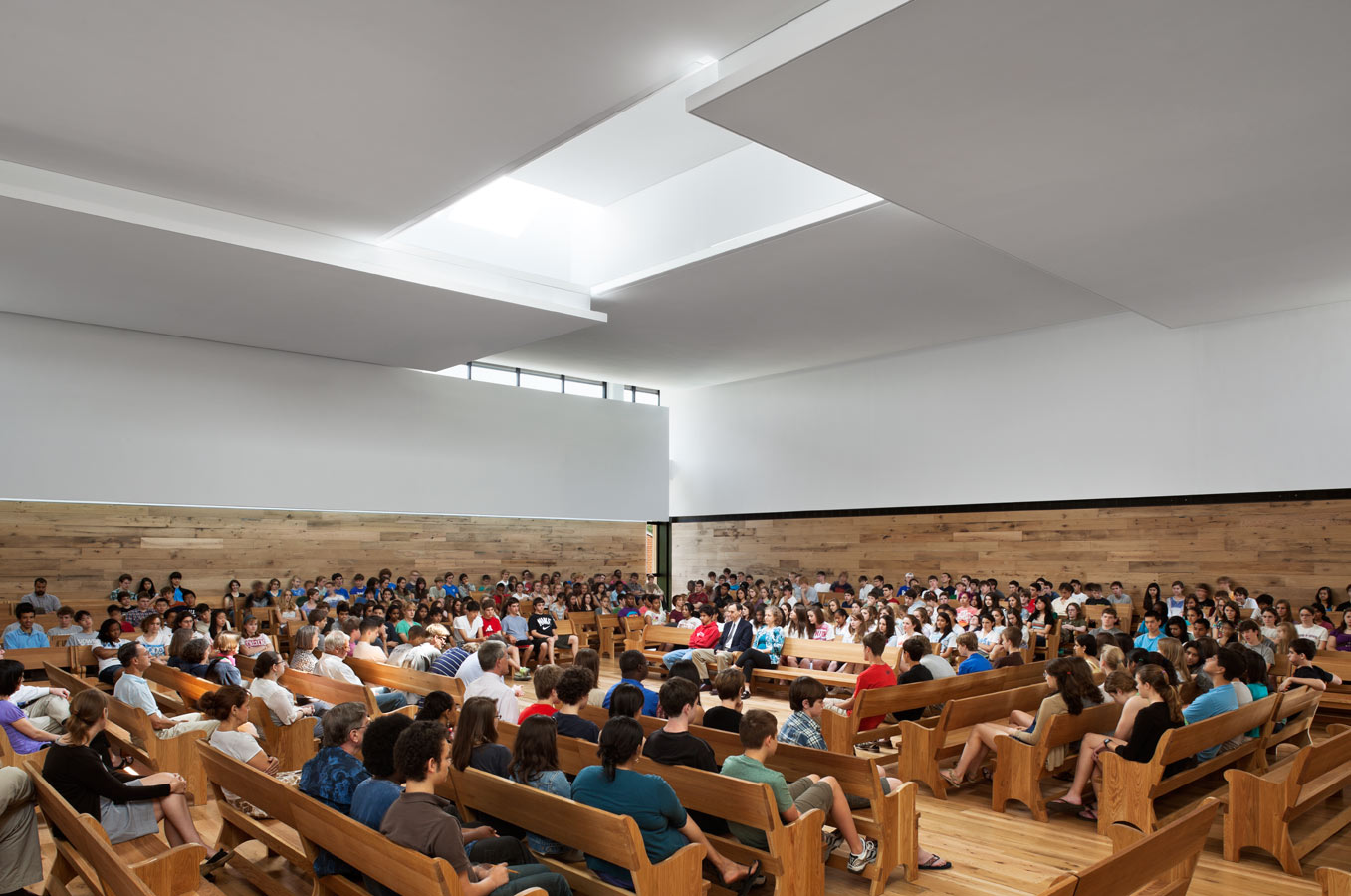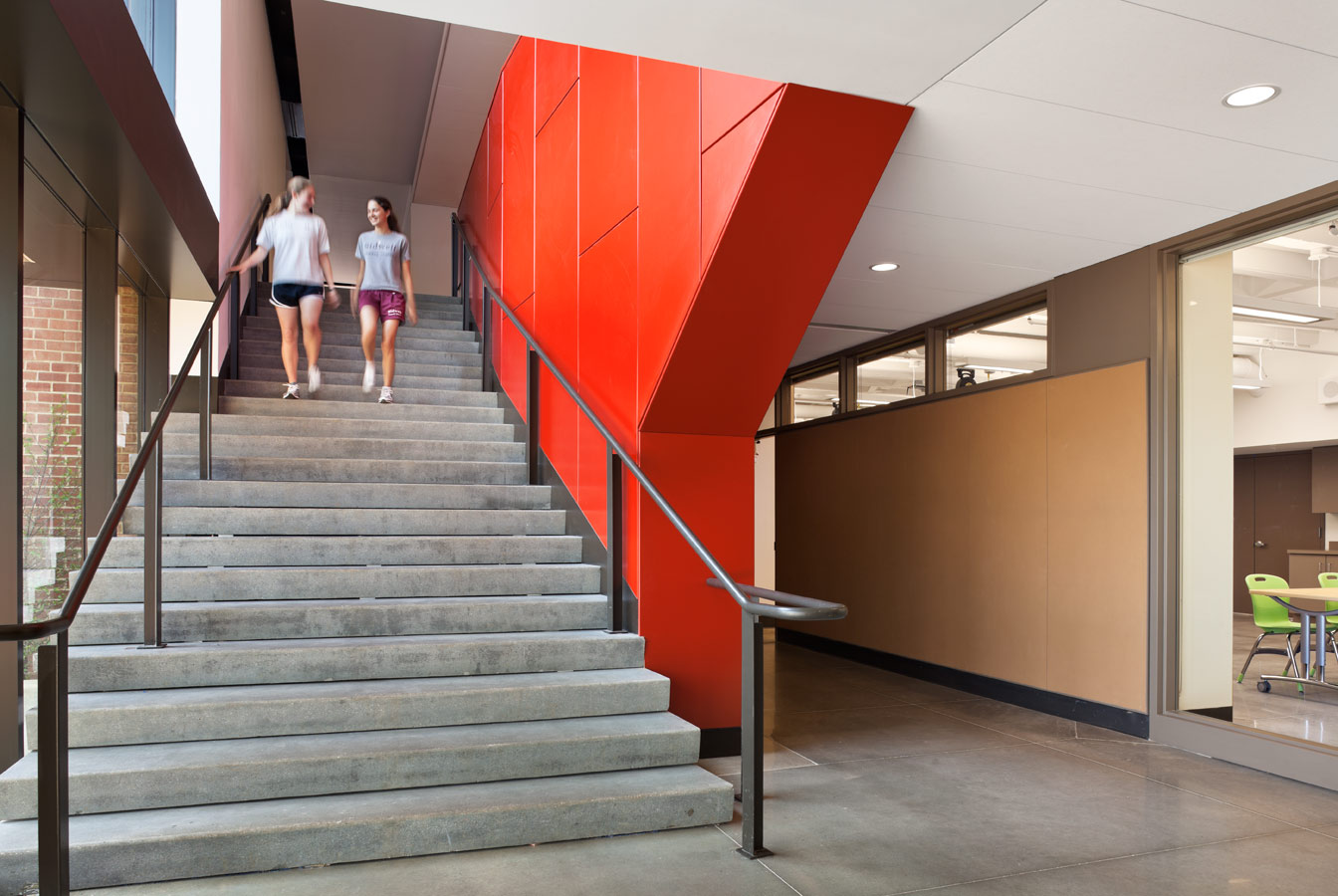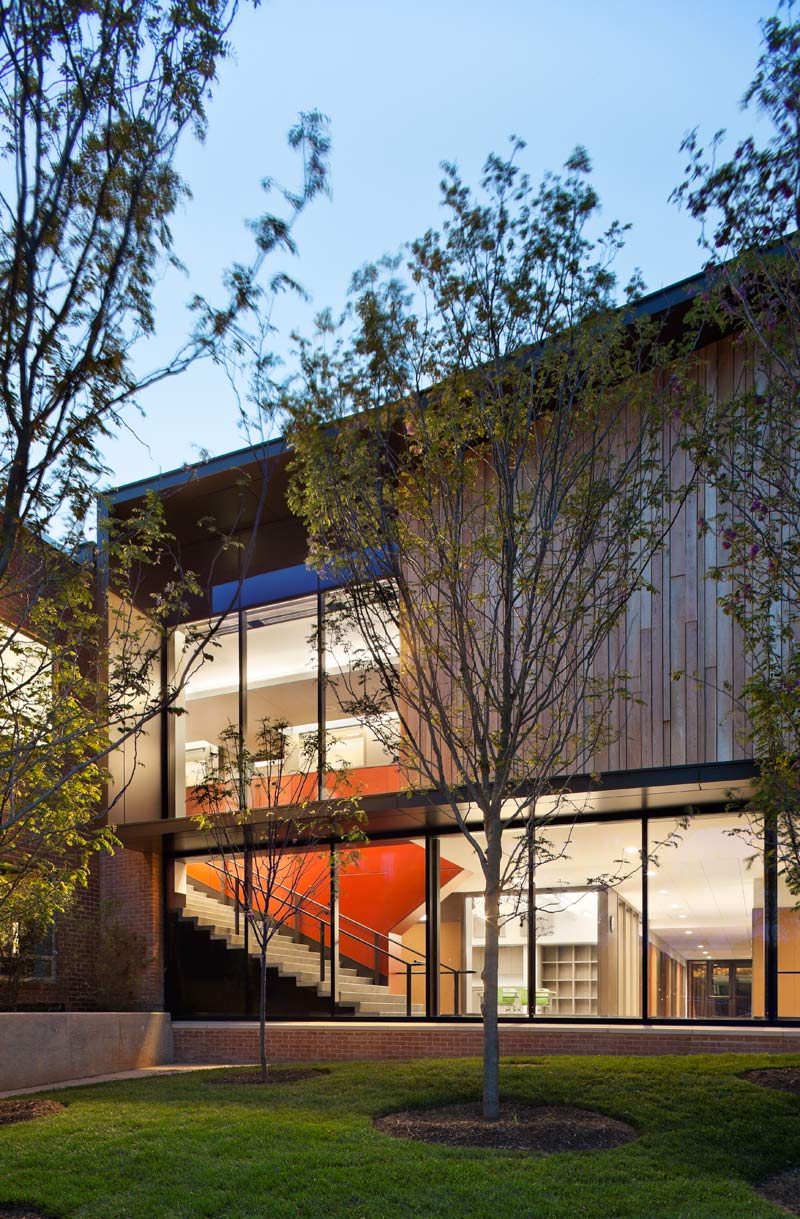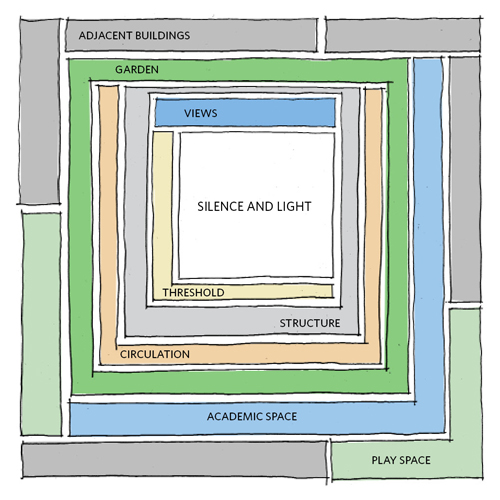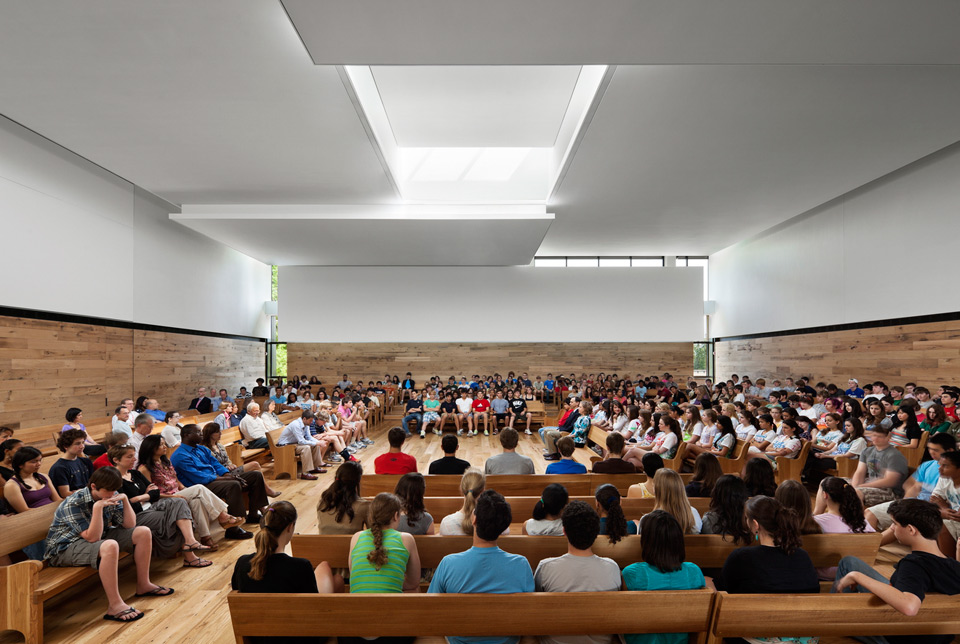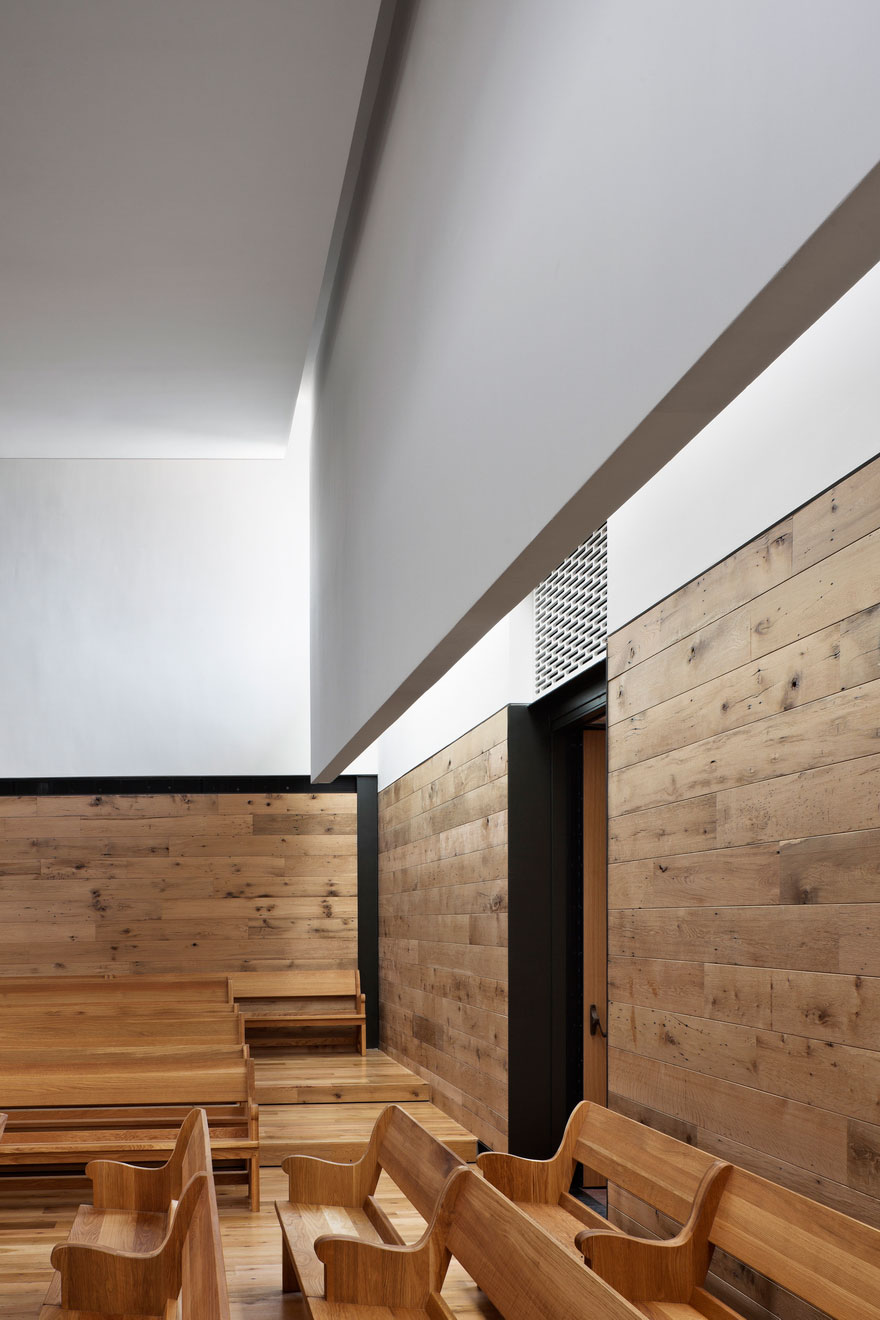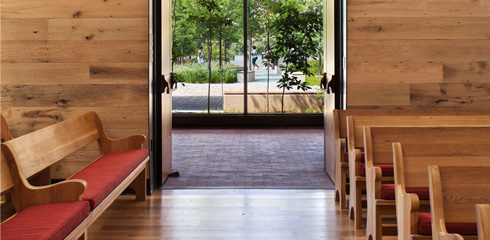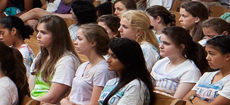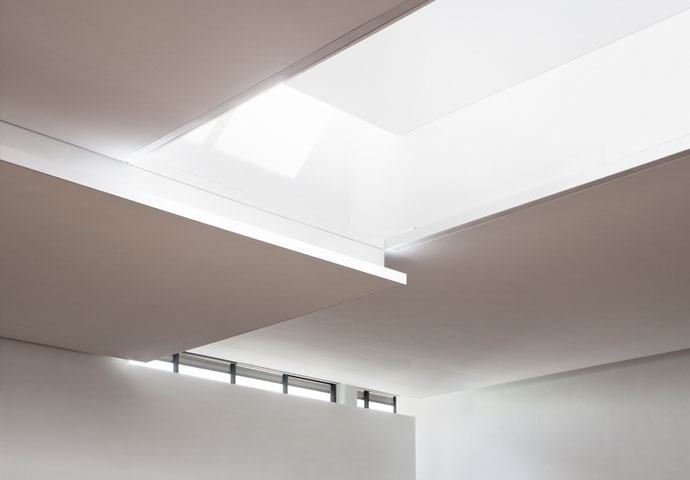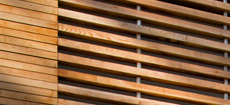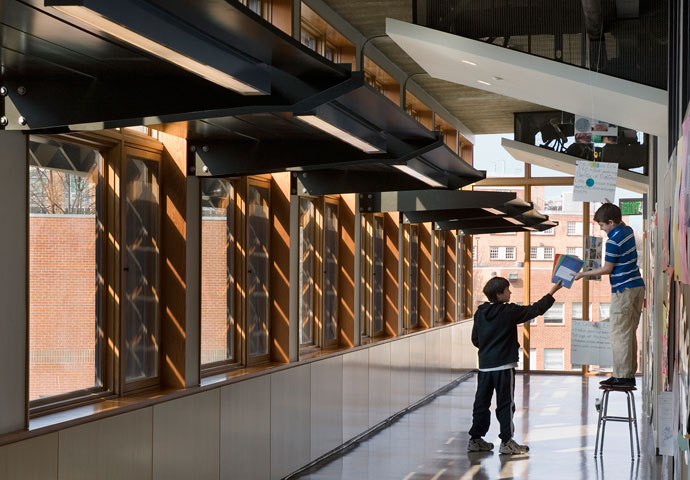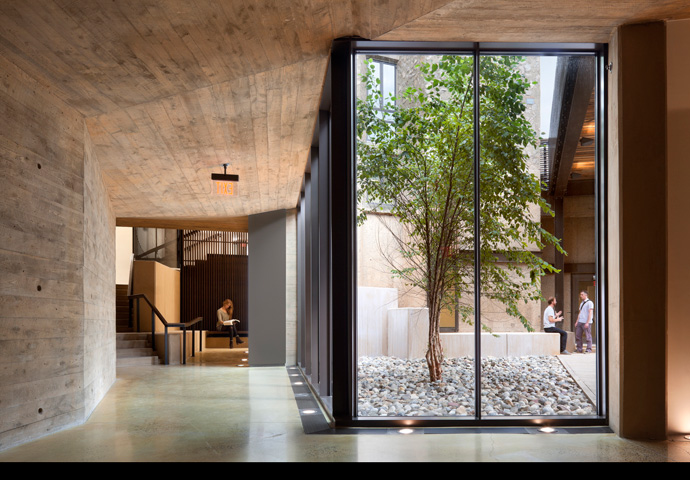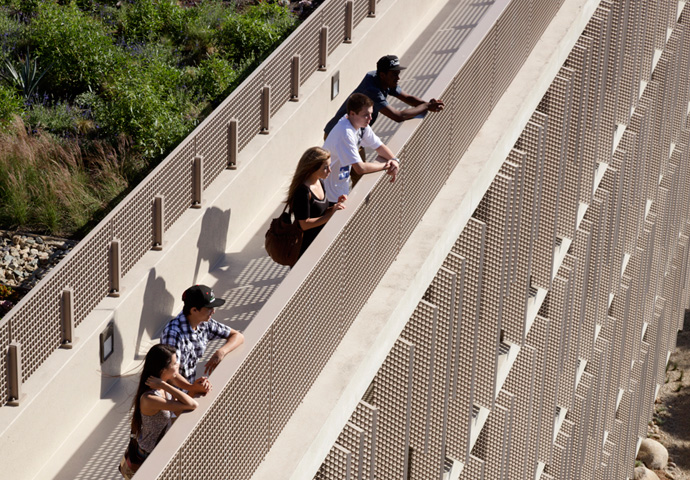How can we transform a characterless gymnasium from the 1950s into a home for worship that moves people to a state of contemplation?
Sidwell Friends School, founded in 1883, held its first lessons in a back room at Washington DC's Quaker Meeting House before moving to a campus on Wisconsin Avenue. Our work at this highly respected urban day school began with a 2001 master plan to transform the disparate buildings of the Wisconsin Avenue campus into a physical demonstration of the school's Quaker values.
Conceptual diagram showing layering of program, landscape, systems around a core of silence and light.
One aspect of this transformation was the design of a new meeting house that would serve a fundamental role: housing the weekly worship service that is central to the Sidwell community. Unlike most Christian services, Quaker meeting is a silent worship practice with no leader or liturgical structure; congregants are encouraged to speak when they are moved to do so, on the principle that there is something of God in every person. The meeting house traditionally gathers people facing each other to emphasize the spirit of the group, with every member holding equal status.
Reuse
The school's Kenworthy gymnasium had previously served as a noisy, makeshift meeting space, with 500 folding chairs that needed to be set up each week to accommodate students and staff. The master plan designated the gym for renovation into an arts center and identified a separate site for a new meeting house, but issues of zoning and cost led to a new strategy: creating a meeting house within the bones of the old gym. In spite of initial skepticism, this building reuse would ultimately bear out the Quaker values of stewardship and simplicity.
Suspended planes and walls modulate light and sound. A combination of absorptive and reflective surfaces allow the smallest voice to be heard.
© Michael Moran/OTTO
The meeting house places silence and light within a void at the core, with architecture, landscape, and building systems arranged in concentric layers around it, all of them providing a filter between inside and out. A small pocket garden at the entrance separates the space from the busy campus beyond. An enveloping lobby provides a place of pause before entering the worship hall. Thick walls containing mechanical and electrical systems coupled with acoustic insulation become a further threshold, creating a cushion of protected silence.
Panels suspended from the north and south walls screen light from clerestory windows, washing the raw oak that lines the walls with diffuse light. The oak wall liner is made of wood reclaimed from a Maryland barn and is left unfinished to patina over time.
© Michael Moran/OTTO
Layers
The meeting hall itself is a muted square space within the volume of the former gym. Insulated from outside noise and disturbance, it offers a calming, tranquil atmosphere that has the effect of quieting students when they gather for meeting. Its white oak floors and wall liner made with wood reclaimed from local barns lend a sense of warmth, intimacy, and age. Natural light from a central aperture is soft and diffuse, its source hidden behind ceiling planes that modulate the light and the hall's acoustics. Suspended panels on the north and south walls partially screen the clerestory windows, admitting light that washes the raw oak along the walls and permitting glancing views into the garden.
The garden and loggia provide a welcoming front for the meeting house and arts center on the newly formed plaza that now serves as the main entryway to campus. At the planning level, the earlier plaza was little more than a passageway; it has been unified by eliminating grade changes and adding new landscaping, pervious pavers, benches, canopies, and lighting. These modifications establish a central meeting and arrival place that can accommodate the entire school population; it also externalizes a fully internalized collection of buildings into a coherent assemblage.
While the meeting house occupies the majority of the old gymnasium, built-in glass cases form a gallery for student and faculty art works in the lobby space outside, and choral and instrumental practice rooms stand adjacent. On the lower level, a photo studio, digital lab, pottery studio, and other art and music rooms fit within the concrete frame of the former gym.
A thorough reuse of existing resources combined with carefully conceived and crafted insertions organize anew the entire campus—forming connections and gathering places where none previously existed—and create a new space for contemplation and worship at the core of Sidwell Friends.


